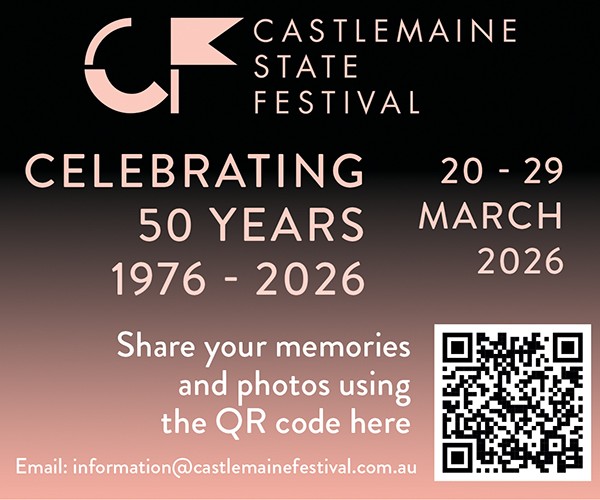
Chewton resident, keen historian and Chewton Domain Society’s Monster Meeting commemoration coordinator Patricia Healy has responded to the article in last Friday’s Castlemaine Mail and questions raised by writer and former barrister Brian Walters AM SC on the current World Heritage bid for the Central Victorian Goldfields.
Ms Healy said questioning the appropriateness of 13 local councils’ World Heritage bid for the Central Victorian Goldfields, Brian Walters raises important questions about why and how we should remember significant historical events that form a central part of our heritage. However, Ms Healy says his suggestion that the 19th century gold rush is not an important heritage event is a failure to understand the role it has in the development of our nation.
“Inevitably most of Australia’s significant historical events such as the gold rush are variously remembered (if at all) as worthy of celebration, as a shameful stain on our history or as cause for continuing anger and protest – with ongoing debate about which it is. But however remembered they are for better or worse a part of our shared Australian heritage and played a vital role in shaping the cultural, social and economic fabric of our nation,” Ms Healy said.
“The 19th century Victorian gold rushes brought transformational change to the new colony of Victoria and ultimately Australia, with long lasting effects. The demography of Victoria was transformed as thousands of migrants flooded in establishing towns, building new industries, and train lines that remain today. And as millions of ounces of gold flowed out to the English banks to underpin the gold standard, the economy too was transformed in ways we still see now,” she said.
“Many prospered from these changes but ever more widespread and destructive mining methods devastated the land and waterways of the Dja Dja Wurrung, who had left the gold lying unwanted in the ground for thousands of years, and continued the destruction of their culture begun by the squatters as they invaded with their sheep. This is the great tragedy of the gold rushes that still blights our land today and rightly remains the reason for the shame that Brian and others feel,” Ms Healy said.
“The other great and long lasting impact of the gold rushes was the political change wrought by the gold Diggers that kick-started the march to the parliamentary democracy we have today. As historian Marjorie Theobald writes in her history of the first 10 years of the central Victorian gold rushes (Mount Alexander Mountain of Gold 1851-1861), there was “no aristocracy, no established church and only a thin crust of self-appointed gentry” in the Australian colonies and it was inevitable that a new order would emerge despite colonial government attempts to recreate a class based British model in the antipodes. And it was in the central Victorian goldfields that the inevitable confrontation occurred between those who did not want change and those who wanted something better,” she said.
“The gold rushes brought thousands of mostly young working people to the goldfields to find the riches that would enable them to build a better life than could be found toiling in the workplaces of their masters where they were bound by the 19th century British Masters and Servants Act designed to discipline workers and repress trade unions. They could not vote and they had little in the way of civil rights but they were not deterred by the military government’s attempts to stop them joining the rush that was already overturning Governor La Trobe’s plans for gradual development of the new colony. Plans that did not include more civil rights and the vote for working people – he was no democrat,” Healy says.
“When La Trobe threatened to double the already exorbitant cost of their licence to search for gold, a great meeting of 15,000 Diggers at Forest Creek (now Chewton) gathered for Australia’s first mass anti-government protest meeting in December 1851. They peacefully declared that they would not pay any more and La Trobe, fearing insurrection, backed down. “The Diggers’ victory ignited a popular protest movement that spread across the Victorian goldfields, orchestrated by leaders who made the link between the ambition of those ordinary miners who followed them and the broader political context of the times. The protest movement spread to Bendigo where the Diggers’ Red Ribbon Rebellion in August 1853 forced the government to draft the long delayed first Victorian constitution, the most democratic one at the time, and culminated three years later in December 1854 at Ballarat, when the bloodshed at the Eureka Stockade in December 1854 finally spelled the end of the old order,” Ms Healy said.
“The Diggers’ three years of organised protests in the central Victorian goldfields was the catalyst for the political change that brought the first Victorian constitution into being, extended the popular franchise, opened the land locked up in the squatters runs, ended the gold licence system and saw off the old order across the goldfields. It was a pivotal event in our political history and an important part of our national heritage which deserves to be recognised,” she said.
For more letters on this issue see today’s Opinions section.


